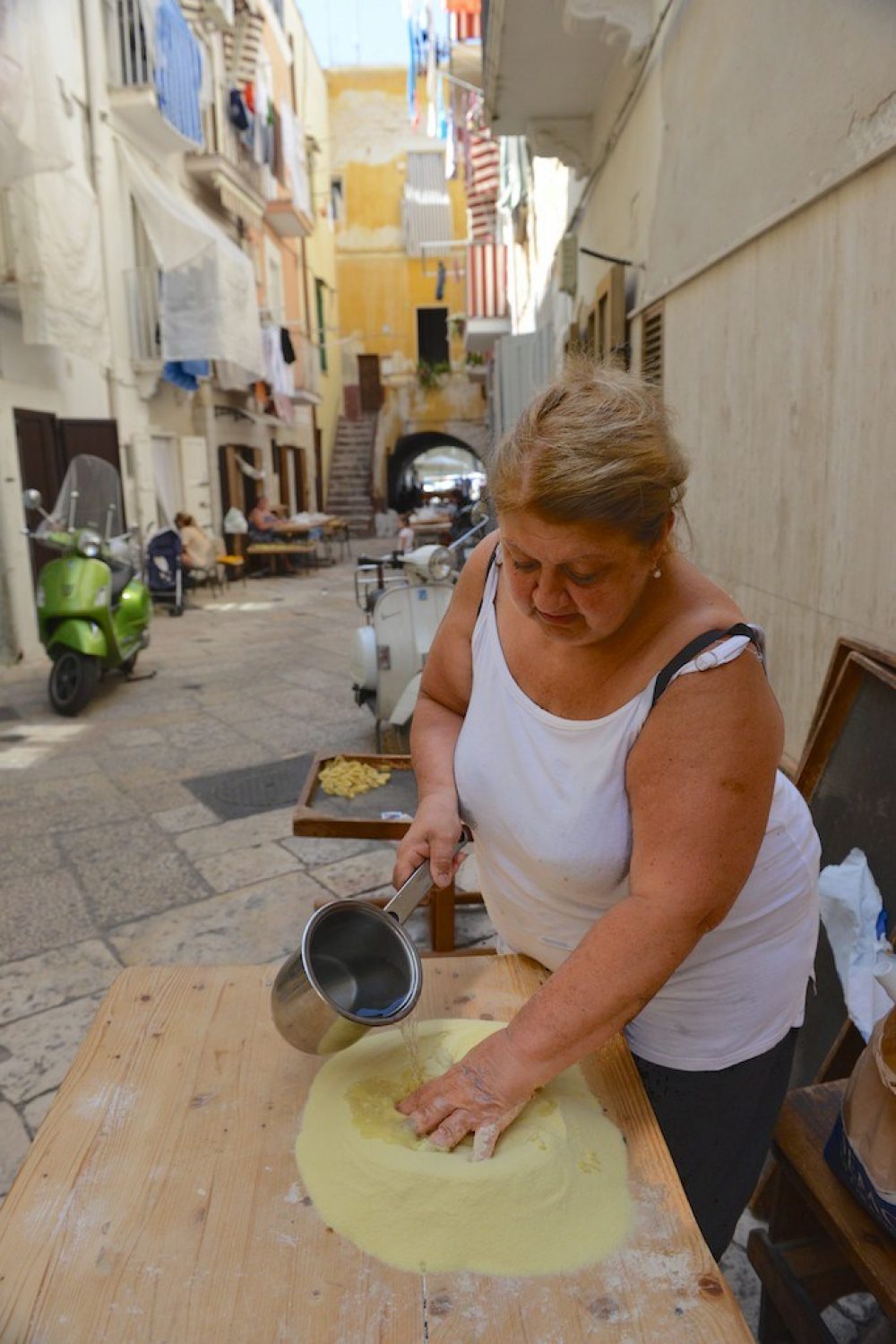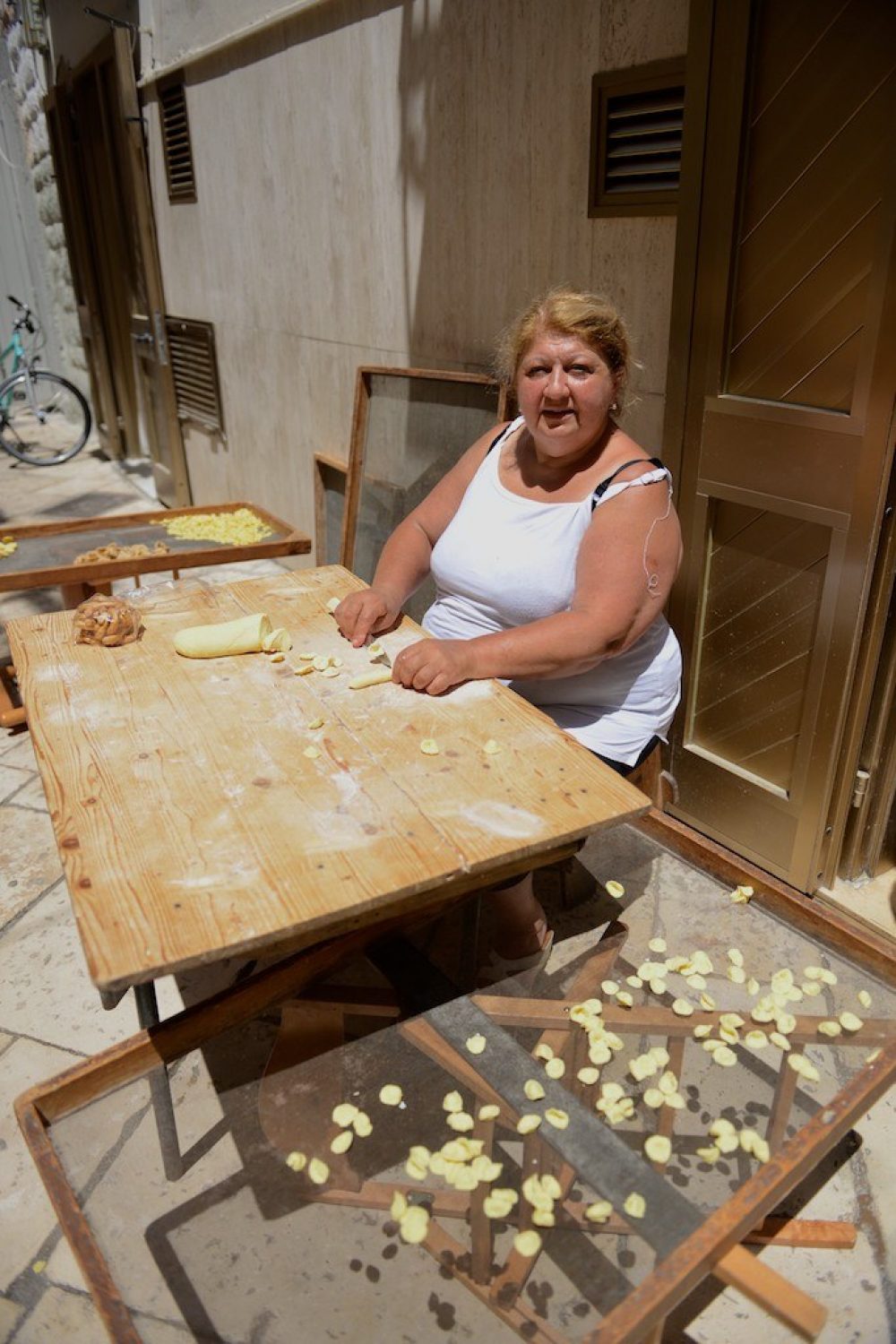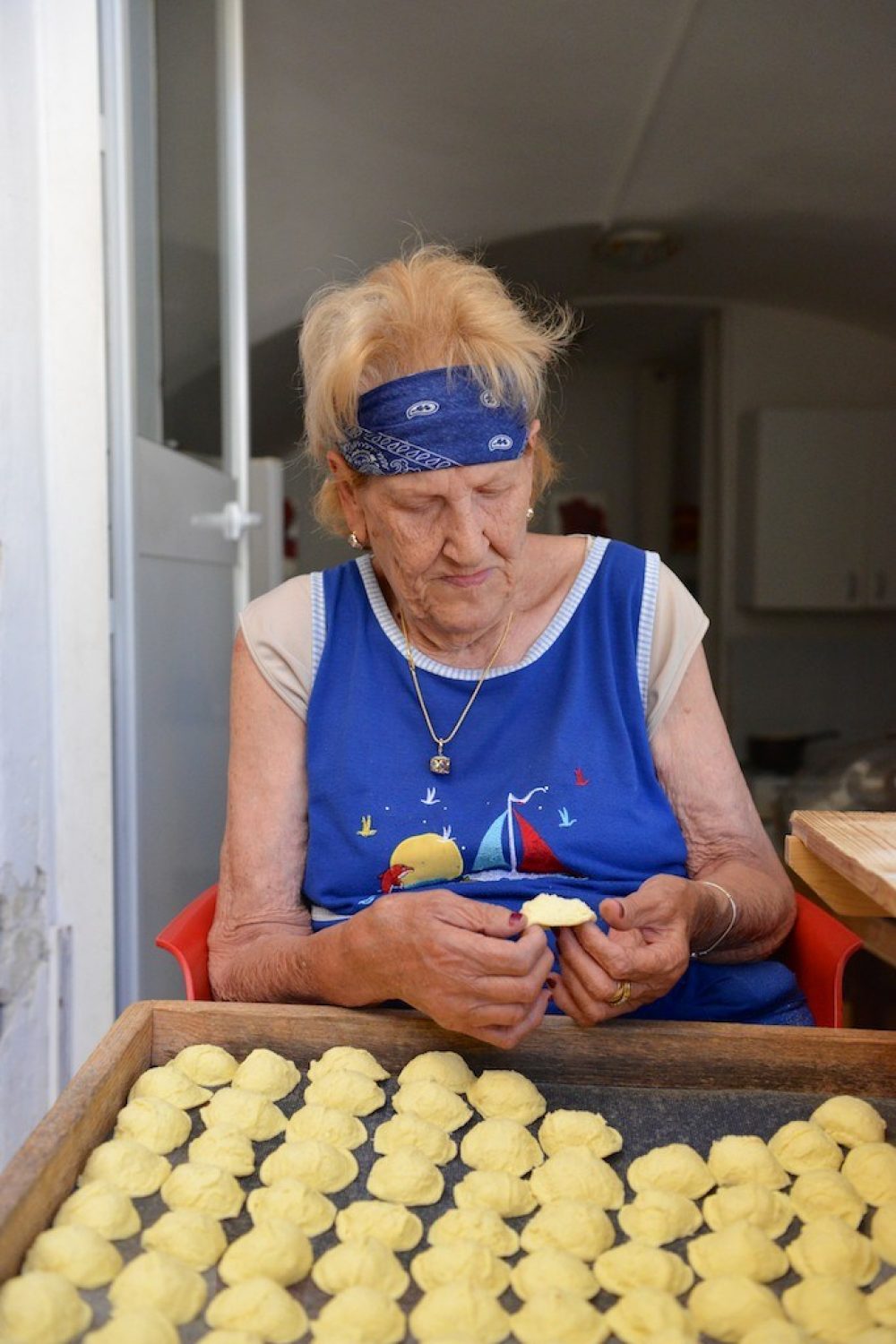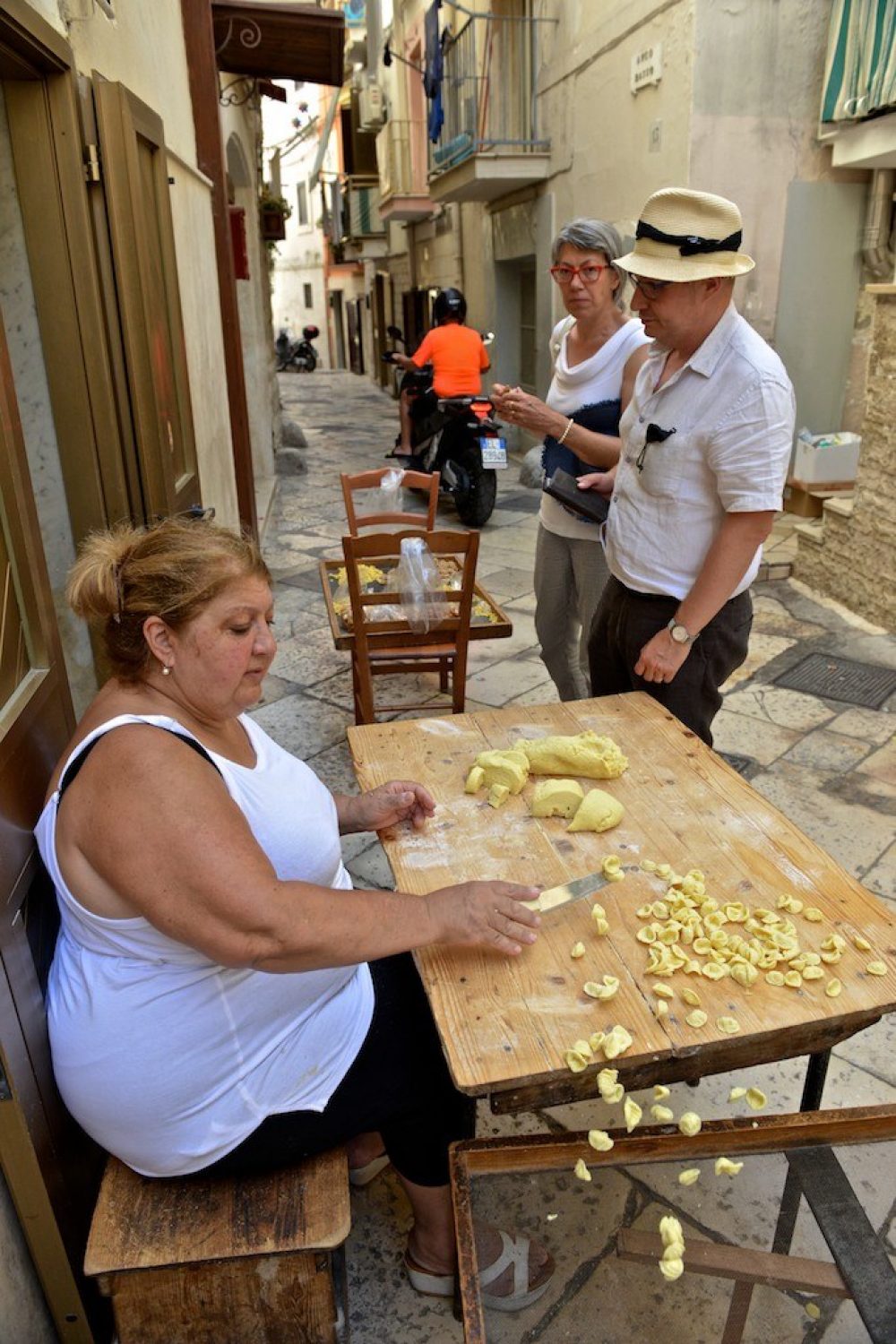Your email address is required to begin the subscription process. We will use it for customer service and other communications from Milk Street. You can unsubscribe from receiving our emails at any time.
Kiss the Nonne
Back to January-February 2020
Burnt ochre facades. Marble. Colonnades. Outdoor cafés. Slow-moving bicycles, many rusted, with the heavy look of a 1950s Raleigh. Market booths stuffed side by side in narrow alleys selling roasted onions, sardines, cured meats, granchi (crabs), borlotti (cranberry beans), bright red peppers, porcini, luminescent celadon grapes, crisp greens and ripe stone fruits.
We shopped the markets for lunch provisions—thick focaccia, mortadella, prosciutto, mostarda (a fruit condiment), roasted onions and beets, fried polenta sticks, fresh farmer’s cheese, two salsas—then headed to the wine bar Osteria del Sole. It serves no food; you bring your own. The handwritten sign at the entrance reads, “If you don’t want to drink, stay outside.”
In the cavernous main room, we set out our purchases on a long wooden table, invited other guests to join us and ordered two bottles of pignoletto, the sparkling wine of the region. (One orders ordinary prosecco in Bologna to start a bar fight.) The proprietor had long stringy hair, a mottled sandpaper face and a wry, wispy smile. A gentleman mafioso threatened; we made friends with a party of Scottish tourists.
The next day we drove to Savigno, a small town southwest of Bologna. Our first stop was a local café just off the town square. A small passageway behind the bar brought us into the kitchen, where three nonne (grandmothers) were frying bread and floured porcini. The rectangles of bread puffed up into fat pillows in the hot oil; we tore it into pieces and had it for breakfast along with espresso and our first bottle of pignoletto.
The leader of this gang of three was dressed in ashen white from head to toe, from a wrapped cotton cap on her head down to the apron at her waist. Her face was lined but young, housing a mischievous 20-something just below the skin, the arc of her effervescent eyes and pursed lips suggesting an appetite for a good time.
The other two nonne were lieutenants to the older commander. One had a mop of tousled gray hair and a mouth that tilted upward on one side as though she were always of two minds. The other had a pleasing round face framed with a cowboy bandanna and sapphire blue spectacles. After getting my cooking lesson in fried bread, it was suggested that I give my instructor, the commander herself, a peck on the cheek.
We posed for the cameras, then the second nonna wondered where her kiss was. And, after a quiet pause, the third suggested that she get two kisses to make up for being last. The morning became a fog of bubbly, hot bread, strong coffee and slightly wanton kissing, nothing like the chaste peck on the cheek that would greet an American grandmother. They were, it seemed to me, still in the prime of life, age notwithstanding. I was in love.
In Dakar, local cooks project an intimate physicality, standing close and licking a taste of soup or sauce off the backs of their hands. In Japan, frugality is paramount; every grain of rice matters. In Beirut, food is an expression of local identity, variations on recipes painting a clear picture of cultural origin. And Paris offers a dynamic conversation about the past in the present and how to reconcile those worlds.
But in Italy, the kitchen is about sizzle—aromas, textures, flavors and body heat. The senses scatter thought. Look into the eyes of a nonna and you realize she is searching your soul for signs of life and redemption.





